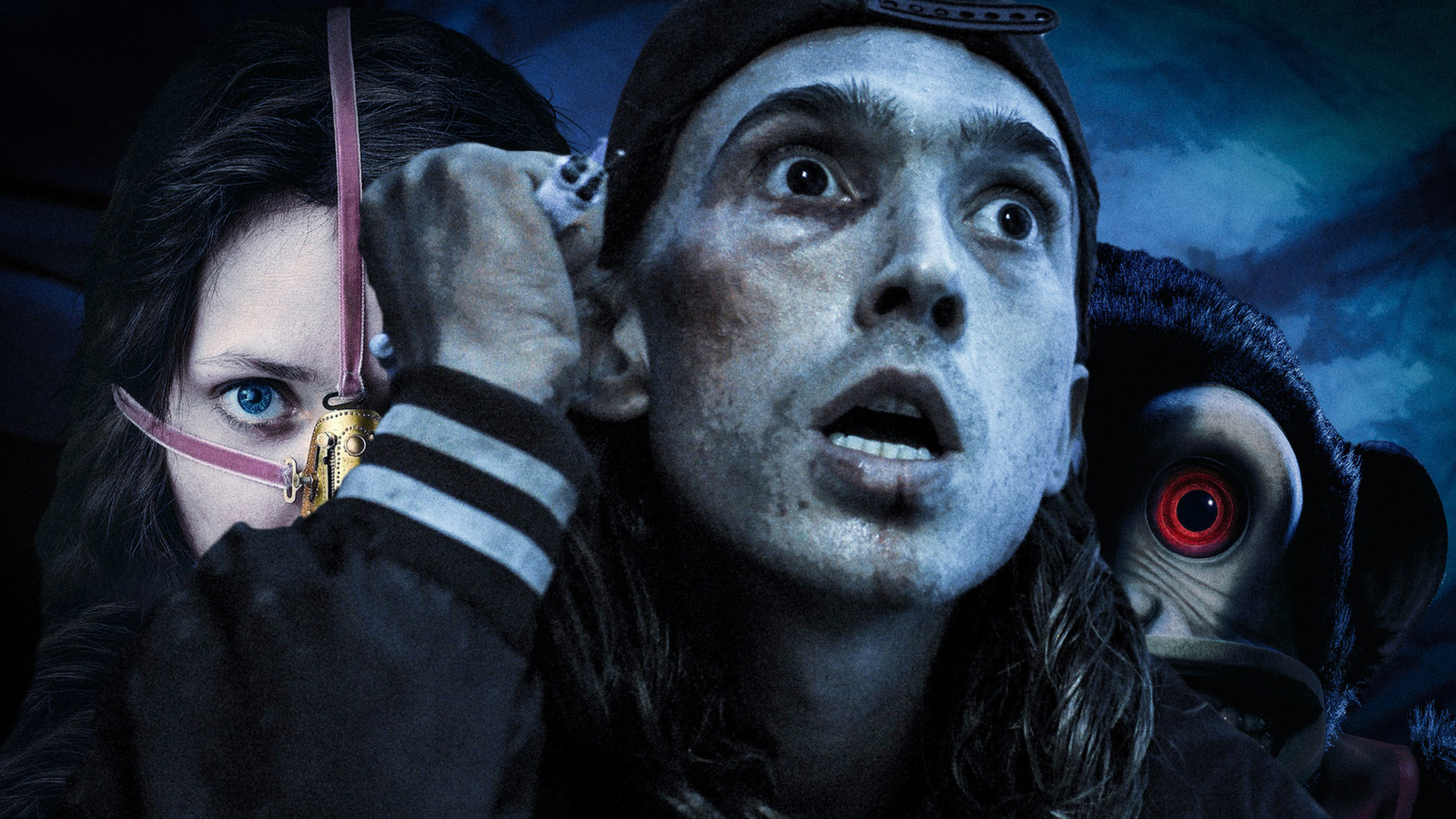Bring Her Back
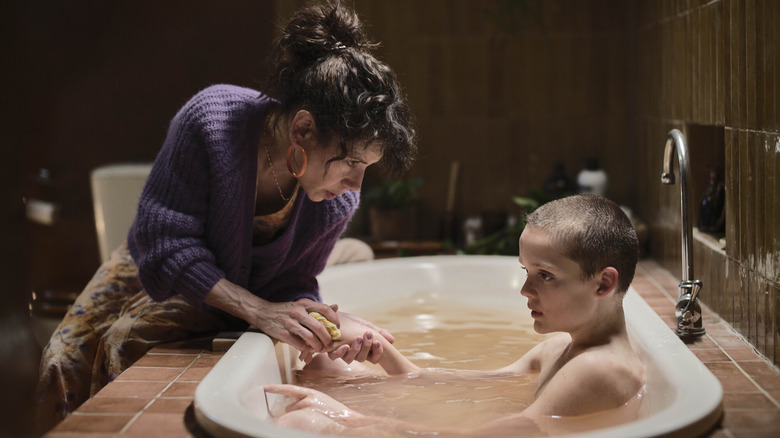
A24
Danny and Michael Philippou’s “Bring Her Back,” like all good horror movies, is just as much about personal pain and trauma as it is about supernatural conceits. Its protagonists are a teenage boy named Andy (Billy Barratt) and his visually impaired sister Piper (Sara Wong) who have just lost their father. They have been moved into an uncaring foster system, leading them into the home of the suspiciously chipper Laura (Sally Hawkins) who recently lost a visually impaired daughter of her own. No points for guessing that Laura will baby and coddle Piper, while aggressively ignoring Andy. Indeed, Laura goes out of her way to make it look like Andy is wetting his own bed and having a personal breakdown. What is Laura up to?
And what is the deal with Laura’s other foster child, Oliver (Jonah Wren Phillips)? Oliver is mute, and has a faraway look in his eyes. And when he’s left unattended, Oliver begins eating things he should be eating.
Eventually it’s revealed who Laura really is and what she’s up to (yes, there does seem to be something supernatural afoot), but that’s not nearly as exciting and as scary as witnessing Andy’s personal struggles. This is a story about how kids suffer in different ways, and the echoes of neglect and abuse. It’s about parental control, and the unhealthy implications of it. There is an underlying sadness and melancholy to “Bring Her Back” that only accentuates the horror, makes it soggier and more viscous. It’s a horror movie that will leave a stain. (Witney Seibold)
Clown in a Cornfield
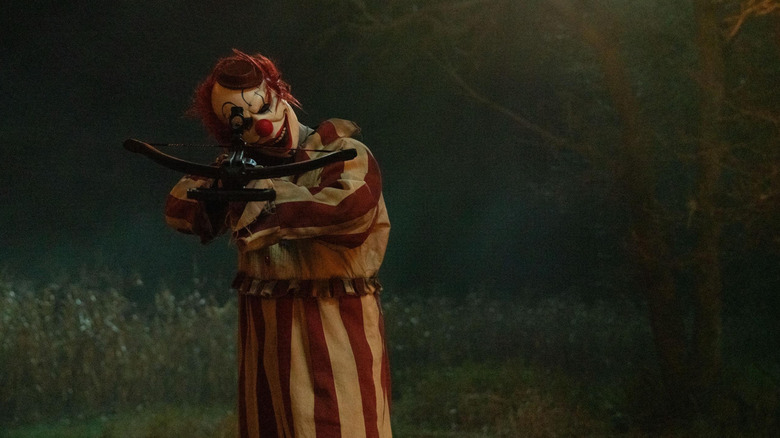
IFC
Scary clowns are a big part of horror, with Pennywise from “It” and, more recently, Art the Clown from “Terrifier” serving as icons of the genre. Though not nearly as high-profile as those examples but no less impactful, this year introduced us to Frendo the clown in the aptly titled “Clown in a Cornfield.” Directed by Eli Craig (“Tucker and Dale vs. Evil”), it instantly earned its place in the scary clown horror movie canon. A YA-tinged, small town slasher overflowing with over-the-top violence — not to mention laughs — it’s about as fun as horror gets.
The film is based on Adam Cesare’s novel of the same name and centers on Quinn (Katie Douglas), who is forced to move to the quiet town of Kettle Springs with her father (Aaron Abrams), seeking a fresh start. The community has fallen on hard times after its corn syrup factory burned down, with tensions between the young locals and the town’s elders rising. Then, Frendo emerges and starts racking up a body count. Delightful, unhinged chaos ensues.
This is probably one of the lesser-seen entries on this list but it’s no less deserving. It’s almost like Craig made a Disney Channel original movie which pivots into a wildly violent, balls to the wall slasher. Rather than playing the same nostalgic beats for 40-year-olds, this feels like a movie with younger viewers in mind, which is refreshing. But it’s also so well executed that any slasher fan, young or old, can (and should) enjoy the ride. With any luck and justice in this world, we’ll be seeing a lot more from Frendo in the future. (Ryan Scott).
Companion
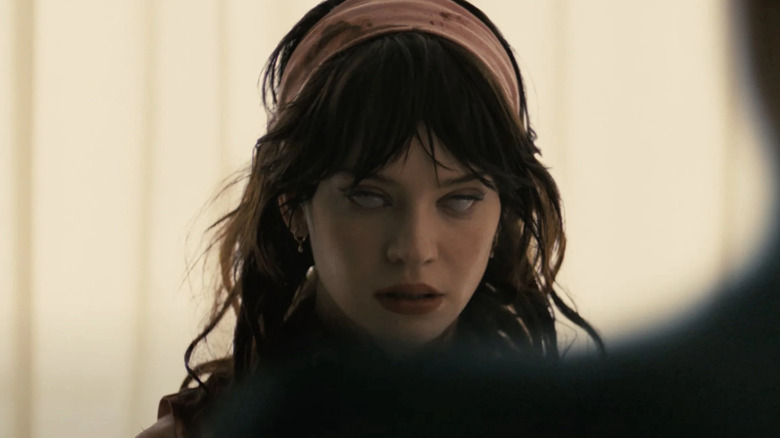
Warner Bros.
Horror is a genre women thrive in, because it’s so easy to make allegorical stories about the horrible things men do to them. Enter “Companion,” where Iris (Sophie Thatcher) learns she’s actually a humanoid sex toy programmed to love her boyfriend, Josh (Jack Quaid). Josh, a typical “nice” guy who thinks the world owes him for not being too terrible, tries to use Iris as the fall gal for a murder and robbery. She runs off, and the game is afoot!
Killer robots are a common horror villain: “Terminator,” “M3GAN,” etc. “Companion” flips that cliche on its head to make the rogue robot the hero who only kills in self-defense. The android isn’t the one hunting the final girl, she is the final girl.
A horror story about feminist liberation, “Companion” walks in the footsteps of “The Stepford Wives.” Part of Iris’ toughening up into a horror heroine is losing the costume of domesticized femininity Josh has put her in. (Note how many of her outfits are non-threatening, colored pink or baby blue). Iris’ robotic nature, and her lack of true autonomy, adds to the allegory. She’s all on her own against the world because that world, and even the man she loves the most, sees her as an object. Josh has a remote control for her body that can take away her free will, i.e. her consent. Artificial intelligence like Iris is still a ways away from reality, but other pieces of her story feel all-too real. (Devin Meenan)
Dangerous Animals
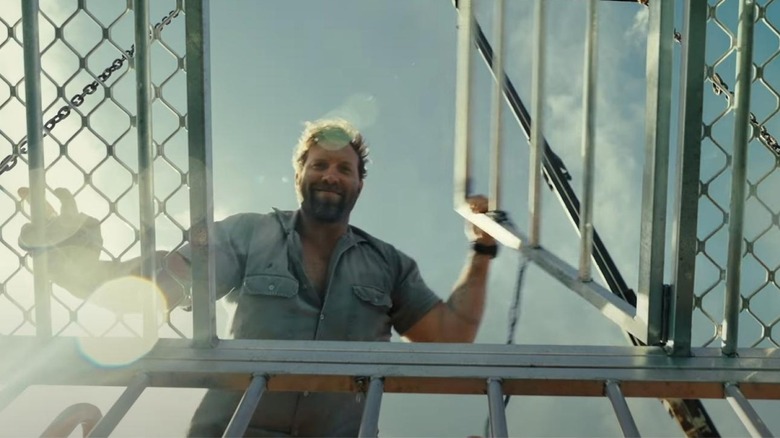
Independent Film Company/Shudder
Shark movies are a dime a dozen, as are serial killer movies, and it’s hard to find a movie that has a fresh new take on either of those. But Sean Byrne’s “Dangerous Animals” manages to be one of the best and most original horror movies of 2025 by combining the shark movie with the serial killer movie — while also making the perfect anti-“Jaws.” This is a movie where Jai Courtney plays a serial killer who feeds his victims to sharks in Australia letting the great water predator do the dirty work for him. It’s a clever premise, one that works in no small part because Courtney makes for a fantastic horror villain, a deranged evil Quint who is as charming as he is dangerous. Plus, he gets to do a silly little dance and sing “Baby Shark” in the movie, as well.
The biggest accomplishment of “Dangerous Animals” is how it manages to riff on Spielberg’s “Jaws,” showing clear empathy for the sharks while still making them a threat. It subverts the tropes of that movie by pointing the finger at the real monster (man) while showing sharks to be majestic and (mostly) harmless creatures — that can still rip you to shreds if they wanted to. (Rafael Motamayor)
Final Destination: Bloodlines
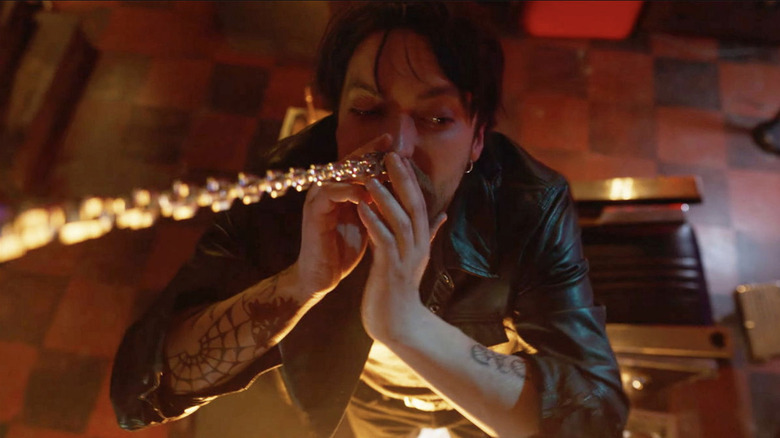
Warner Bros.
Just when it seemed like the “Final Destination” movies had nothing left in its box of tricks, “Final Destination: Bloodlines” delivered a fantastic franchise sequel that expanded the universe while also having a whole lot of macabre fun. The best part of any “Final Destination” movie are the Rube Goldberg-esque designs that Death uses to kill people who have somehow dodged their fate-appointed ends, and “Final Destination: Bloodlines” has some deliciously demented deaths and near-deaths that are sure to tickle fans of the franchise. More than that, however, “Bloodlines” actually gives the “Final Destination” franchise an origin story and explains the timeline, making the movies more than just a random collection of times that Death got really petty.
It turns out that there was a single incident that cheated Death out of a number of lives, with one family at the center of it all, and “Bloodlines” uses this family history to tell a story about inherited trauma and how we can hurt those we love by trying to protect them. Instead of just grossing us out or giving us the giggles with some great gore, “Final Destination: Bloodlines” is a meaningful meditation on the inevitability of death that features beloved horror actor Tony Todd in his final film role, all while having some of the nastiest kills in the franchise. Here’s hoping this is a new start for more great “Final Destination” flicks, because “Bloodlines” is a blast. (Danielle Ryan)
Heart Eyes
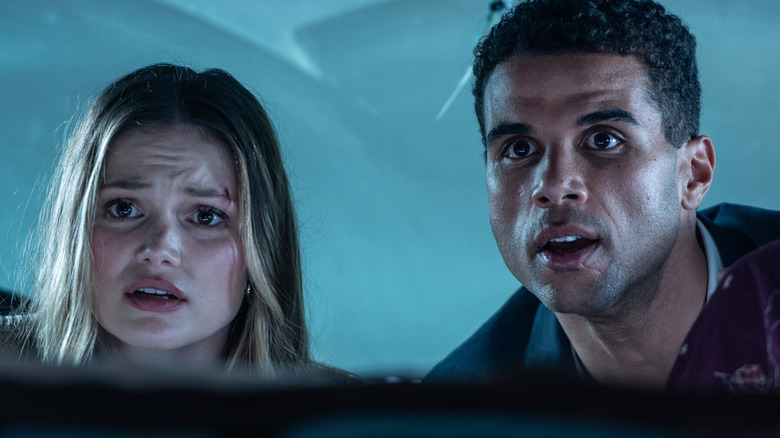
Screen Gems
“Heart Eyes” is a deeply unserious movie, and I mean that as a compliment. “Werewolves Within” and “Scare Me” director Josh Ruben smashes his brand of self-aware horror comedy headlong into some classic romantic comedy tropes, and the result is a meet-cute with a body count.
Pitch designer Ally (Olivia Holt) finds herself thrust into the arms of her new worst enemy, marketing consultant Jay (Mason Gooding), after pretending to be on a date with him to make her ex jealous. This impulsive act attracts the attention of the Heart Eyes killer, a slasher who targets couples on Valentine’s Day. Before long, Ally and Jay’s fake date has turned into an all-night cat-and-mouse game, and a real romance starts to blossom in between dodging machete strikes.
It’s the chemistry between Holt and Gooding that really sells this one, not to mention their deadpan humor in the face of a maniac trying to shoot them with little cupid arrows. The horror genre had plenty of grimdark entries this year, but if you just want something that’s silly, entertaining, and stuffed with creative kills, swipe right on “Heart Eyes.” (Hannah Shaw-Williams)
The Long Walk
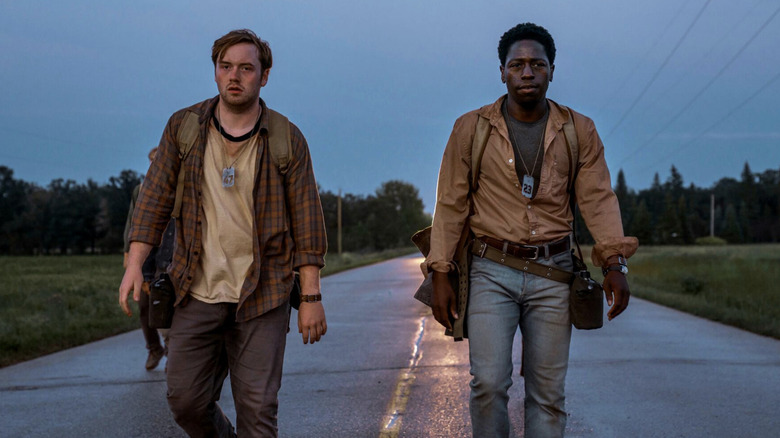
Lionsgate
Director Francis Lawrence may have already tackled a dystopian story following a group of individuals trying to survive until there’s only one standing, thanks to “The Hunger Games” franchise, but nothing in those sci-fi adaptations comes close to the pain, emotion, and power of “The Long Walk.”
Based on Stephen King’s 1979 novel of the same name (under his pseudonym Richard Bachman), the film follows an annual televised contest in a dystopian future where a group of 50 boys try to walk as long as they can until only one of them remains. They must keep a pace of 3 miles per hour, and if they fail to keep pace, they get three warnings until their ticket is punched, which means they’re shot and killed. The last one standing wins a load of money and the fulfillment of a single wish.
Cooper Hoffman (“Licorice Pizza”) and David Jonsson (“Alien: Romulus”) star as Ray and Pete (respectively), the two protagonists who form a beautiful, brotherly bond while walking hundreds of miles in just a few days, despite being in direct competition with each other. But even outside of the leads, one can’t help but root for almost everyone in the ensemble, especially Ben Wang as Olson, which brings inevitable agony when they each go down one-by-one. Incredibly suspenseful, emotionally harrowing, and undeniably unsettling, “The Long Walk” is one of the best Stephen King adaptations we’ve ever seen, and that undoubtedly makes it one of the best movies of 2025. (Ethan Anderton)
The Monkey
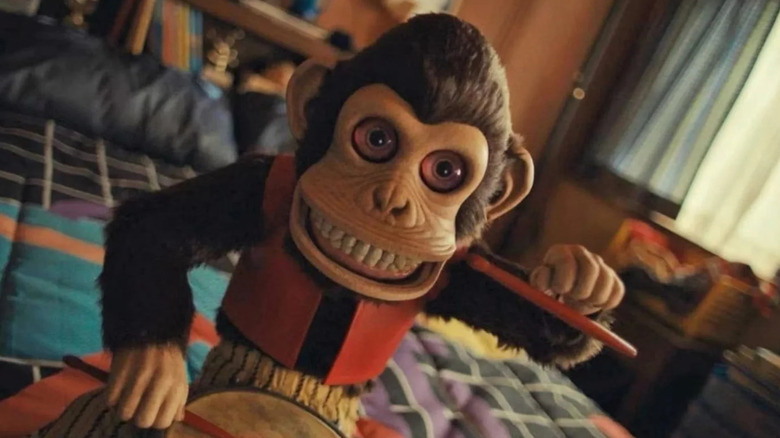
Neon
Stephen King is one of the most prolific artists in multiple mediums, and there are a ton of movies bearing his name. Osgood Perkins isn’t as prolific yet, but his name is beginning to be oversaturated, especially for those who don’t vibe with his idiosyncrasies. When it was announced that these two would be essentially collaborating, with Perkins writing and directing an adaptation of King’s 1980 short story, no one knew quite what to expect. This is part of why “The Monkey” feels like such a surprise, even though it brings together King’s mean streak and Perkins’ pitch-black humor. Who would’ve guessed that Perkins would make a movie that is so “Final Destination” coded, it almost outdid this year’s actual “Final Destination” sequel? The movie, about a cursed toy monkey which acts as a representation of the unfeeling, unfair specter of the Death that will come for us all, is impressively inventive (especially in its grisly, over-the-top kills) and nasty, all while being hilarious throughout. The fact that it’s such macabre fun only allows the deep well of grief and existential dread within the film to burrow under your skin that much further. As 2025 has dragged us all inexorably into an ever-widening maw of Hell, the horror of “The Monkey” almost begins to feel strangely comforting in its way. The fear cannot be stopped, Death cannot be prevented or traded; we might as well dance now, because, horrifyingly, we know something of how this will all end already. (Bill Bria)
Shelby Oaks
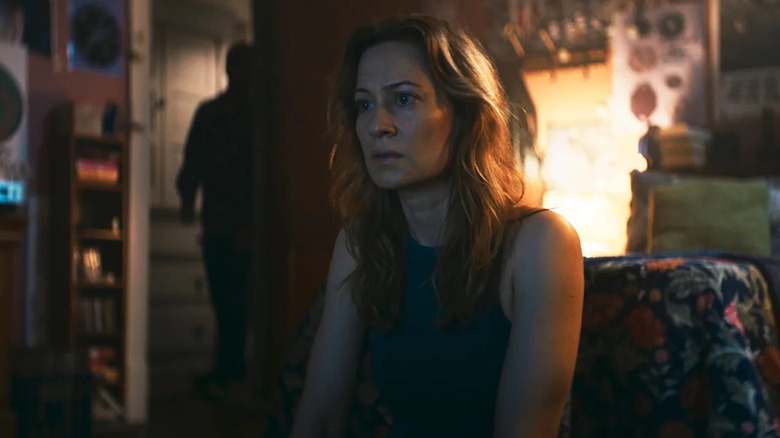
Neon
Chris Stuckmann, the YouTube film critic and content creator turned cinematic director, is helping to usher in a new pathway to success for horror filmmakers. Hailing from Ohio, he went from making videos in his bedroom to helming the most crowdfunded horror film in Kickstarter history, ultimately landing a distribution deal with Neon. His stellar, supernatural horror mystery “Shelby Oaks” marks Stuckmann’s first time in the director’s chair for a feature, a passion project that’s been years in the making.
The plot follows Mia (played by Camille Sullivan), whose sister Riley (Sarah Durn), a paranormal investigator, vanished 12 years ago. Riley’s team, known as The Paranormal Paranoids, has since become an internet obsession, drawing the attention of true crime buffs and online detectives. Mia agrees to take part in a documentary that digs into her sister’s disappearance and the eerie events surrounding it. While the film might initially remind viewers of “Lake Mungo” or “The Blair Witch Project,” Stuckmann’s approach to “Shelby Oaks” doesn’t just follow in their footsteps; it pushes the boundaries of found footage horror, delivering something genuinely fresh and one-of-a-kind in the genre. (BJ Colangelo)
The Shrouds
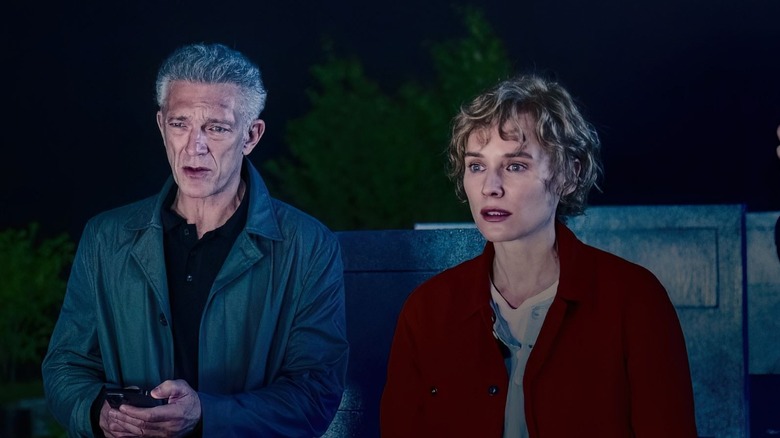
Sideshow/Janus Films
In a year where horror films are expected to dominate the year-end lists of many a cinéaste, don’t let “The Shrouds” slip by unnoticed. David Cronenberg has made a living out of getting underneath our skin with surgical precision, turning his various stories into feature-length metaphors. Existential fears, the push pull between the human body and technological wonders, and a preoccupation with sexuality are all preoccupations the visionary filmmaker has explored time and again over the years. Rarely has he done so with as much vulnerability, jet-black humor, and unnerving relevancy as he does here.
“The Shrouds” is set in a near-future where Vincent Cassel’s Karsh, the CEO of a company called GraveTech, invents a shroud-like wrapping for the dead that allows their loved ones to actually see their bodies while six feet under. Stricken by the recent death of his wife Becca (Diane Kruger) to cancer, Karsh’s obsession with this creepy tech is obviously coming from a personal and intimate place. Mid-life crises never take shape quite like this, but Karsh’s unraveling spiral into grief is nothing if not extraordinary. When Karsh gets word that his late wife’s body is exhibiting some strange characteristics, followed by a disturbing instance of graveyard vandalism that shakes him to his core, Cronenberg takes this as his cue to dive headlong into what he does best: body horror, paranoid conspiracies with untold ramifications, and a mounting sense of dread.
A techno thriller, erotic drama, and sci-fi fable in one, “The Shrouds” is nothing like what you’d expect — but everything you could want from one of our preeminent talents around. (Jeremy Mathai)
Sinners
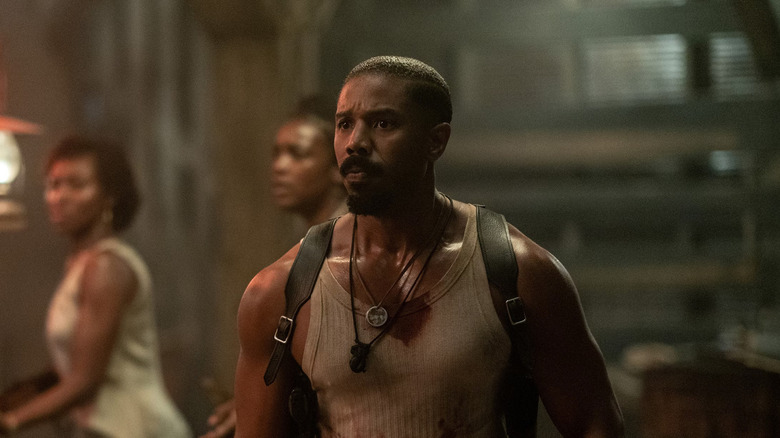
Warner Bros.
Ryan Coogler’s “Sinners” is a full-service cinematic experience: it’s a hangout movie soaked through with eroticism that occasionally explodes into an action movie. But above all, it is a horror film – though it takes its time getting there. One of the great moviegoing joys of my year was taking a group of friends to see the film, one of whom only went because it had Michael B. Jordan and Hailee Steinfeld in it. The film was nowhere on her radar. So when Jack O’Connell drops out of air and approaches a Klansman’s abode, she exclaimed “What the f***?” Then the Choctaw vampire hunters show up, and suddenly this isn’t a drama about two identical twin brothers attempting to start up a juke joint in their Mississippi home town. It’s a horror movie, and, in classic vampire fashion, it goes straight for the jugular.
“Sinners” is a terrifying saga of cultural appropriation. O’Connell’s trio of Irish musicians have been absorbed into the homogenized fabric of America, and they’ve come to suck the soul out of the blues. “Sinners” is a horror film about the way minorities’ music and identity is consistently under attack. It also deals with the perceived sin of drinking and carousing – which is a necessary release for Black people forced to work in the cotton fields all day. What blows me away about “Sinners,” though, is how it mashes up different types of horror filmmaking. As the film nears its fiery climax, composer extraordinaire Ludwig Göransson shifts gears and conjures the macabre spirit of Lucio Fulci’s musical maestro Fabio Frizzi. When I hear those dire chords, I expect the worst. “Sinners” doesn’t go full Fulci, but it’s the rare studio movie that acknowledges that depth of demonic terror. It’s a horror connoisseurs’ flesh-rending feast. (Jeremy Smith)
Together
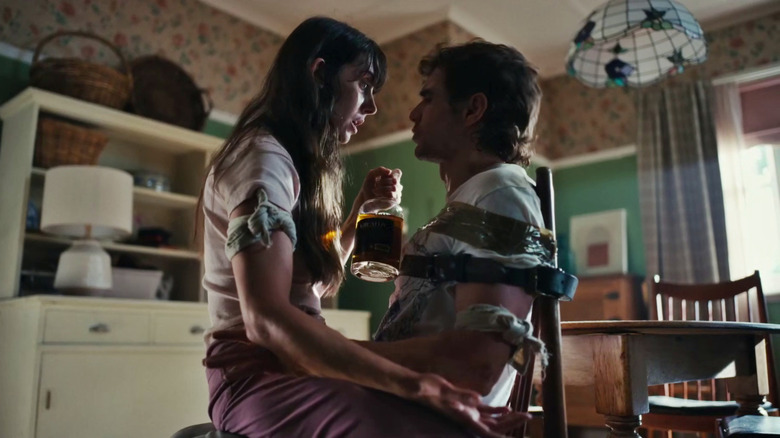
Neon
The horror of codependency in a romantic relationship turns quite literal in Australian writer-director Michael Shanks’ feature debut, “Together.” As bizarre as it is oddly amusing, Shanks’ movie gets great mileage out of Dave Franco and Alison Brie’s real-life romance to unleash their sparkling chemistry in a story that sees them battling the challenge of staying together in an isolated small town where eerie things are very much afoot. From the unsettling beginning, it’s pretty obvious where things are headed here, but that doesn’t mean Shanks spoils all the fun before the time is ripe for some chilling gore and off-putting gooeyness.
I said it before, and I’ll say it again: Despite its predictable nature and restrained scares, “Together” is one of the most entertaining horrors of the year. It may not be as appalling as its plot suggests at times, but Shanks finds a satisfying balance to pull the main trick off and deliver an ending as off-putting as it’s endearing. From a first-time director, it’s a pretty neat accomplishment that promises more to come. Hopefully, the lawsuit of idea theft that somewhat stains the movie’s success won’t overshadow his rise as a talented up-and-coming horror auteur. (Akos Peterbencze)
The Ugly Stepsister
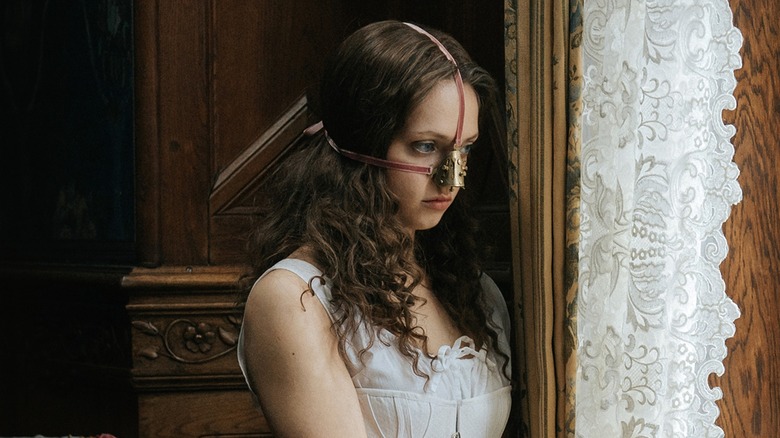
Scanbox Entertainment
Emilie Blichfeldt weaves a violent, gross-out “Cinderella” story with “The Ugly Stepsister,” where repulsive body horror meets a scathing unpacking of ingrained misogyny. Elvira (Lea Myren) unwittingly takes on the titular role due to society’s warped expectations of women, but her single-minded focus on aping a certain beauty standard comes at a very high (and painful) price. Blichfeldt doesn’t beat around the bush here, as the film employs exaggerated visual contrasts and brazen shock value to drive its thematic thesis home — surreal dreams, blood-soaked limbs, and contorted bodies greet us while Elvira embarks on her nightmarish journey. There are also a lot of jarring emotional moments, where words are wielded like objects capable of causing blunt force trauma when cunning schemes are rendered futile.
The film’s lack of subtlety emerges as its greatest strength, allowing characters to be as unpleasant or mean-spirited as they want to be without detracting from their lived experiences. Elvira’s cruelty doesn’t downplay her desperation to be seen through a certain lens, as she’s a victim of a patriarchal structure that benefits from making women feel on edge at all times. Expect nods to David Cronenberg, but without the layers of nuanced psychological subtext, as “The Ugly Stepsister” wears its aces on its sleeve, but still manages to shock you to the core. Bonus: a particularly gnarly tapeworm extraction sequence is enough to induce disgust and catharsis of the likes you’ve never felt before. (Debopriyaa Dutta)
Weapons
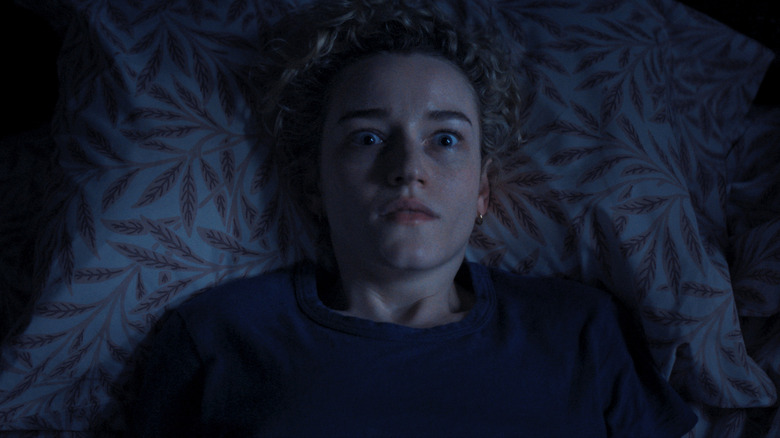
Warner Bros.
There are so many things about “Weapons” that could have gone wrong, so many goofy little details that could have turned against themselves and overstepped in a direction too farcical. Yet, Zach Cregger’s ambitious, comedy-tinted mystery horror piece manages the perfect balancing act between the absurd and the terrifying, resulting in a truly unique piece of cinema. True to its name, the film gleefully weaponizes scares and hilarity (among many other things) in equal measures.
The movie’s central mystery of a disappeared class of children unfolds in small bites, through multiple viewpoint characters. People who are familiar with Cregger’s excellent “Barbarian” know to expect a twist, and may even guess what it is. Yet, when it arrives, it does so in a manner that will linger, and the way things play out is too gloriously eerie to be ruined by the predictions of armchair plot detectives.
“Weapons” isn’t a puzzle box. It’s a tsunami wave of uncannily shaped dread that you may see coming, but that will regardless wash over you. It’s a feat of filmmaking that builds its horrors from grief, guilt, paranoia, supernatural and physical threats, and audience anticipation. Slowly but inevitably, it tightens its grip into a breathless coil that ultimately launches into a cathartic, gruesome finale. Combine all this with an utterly stellar cast (All aboard the “Oscar for Amy Madigan” train), and “Weapons” isn’t just one of the year’s finest horror movies. It belongs in the discussion of the best movies of 2025, full stop. (Pauli Poisuo)

